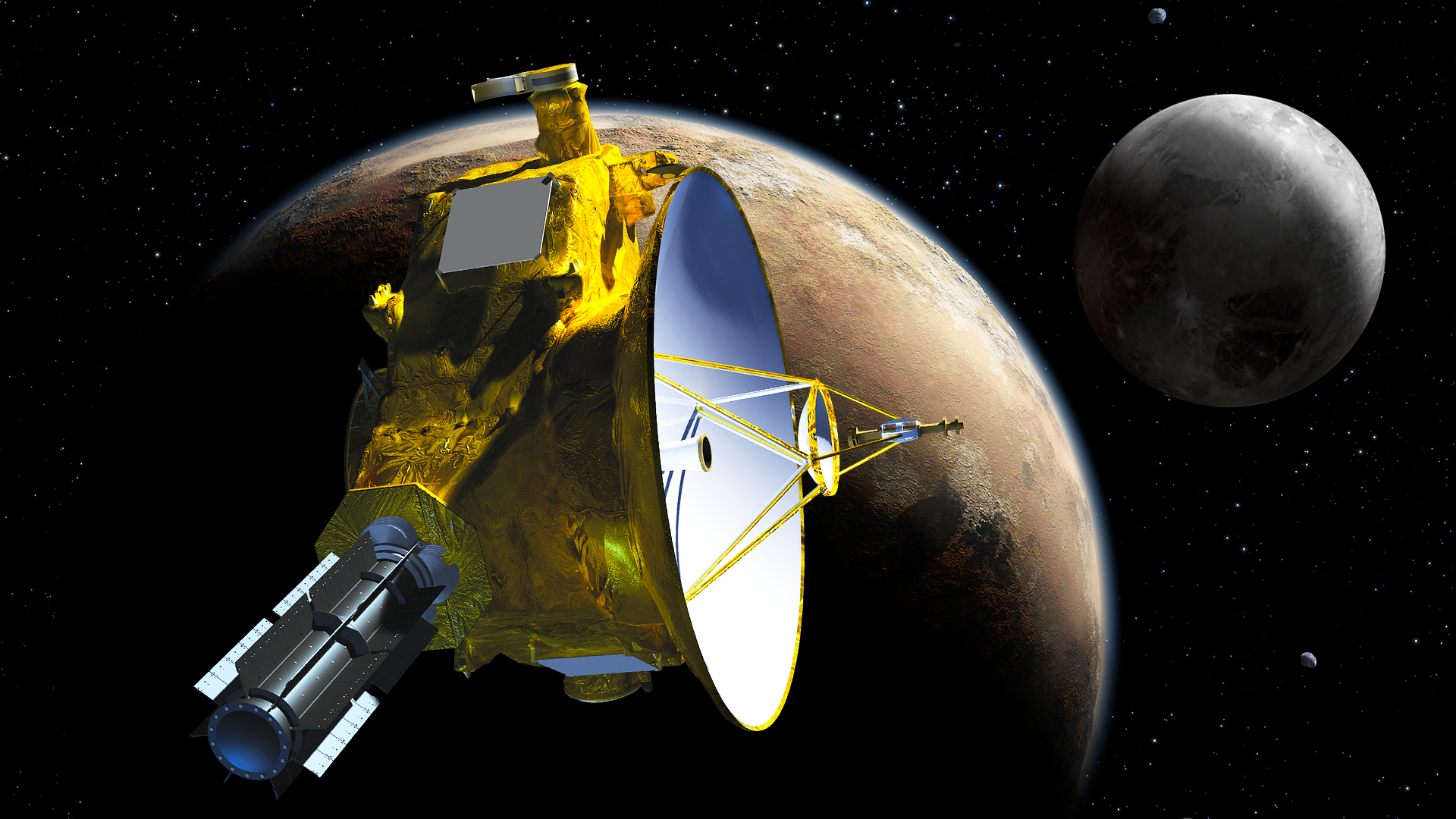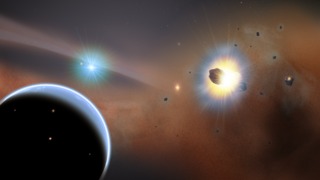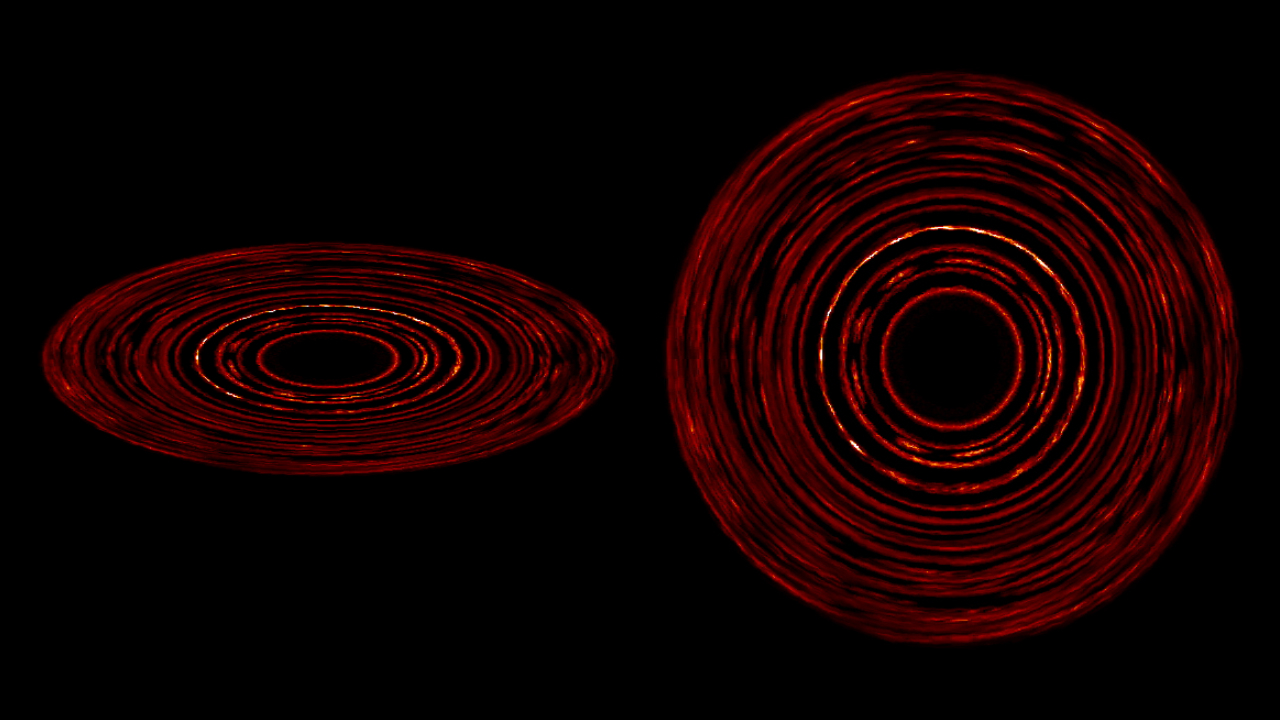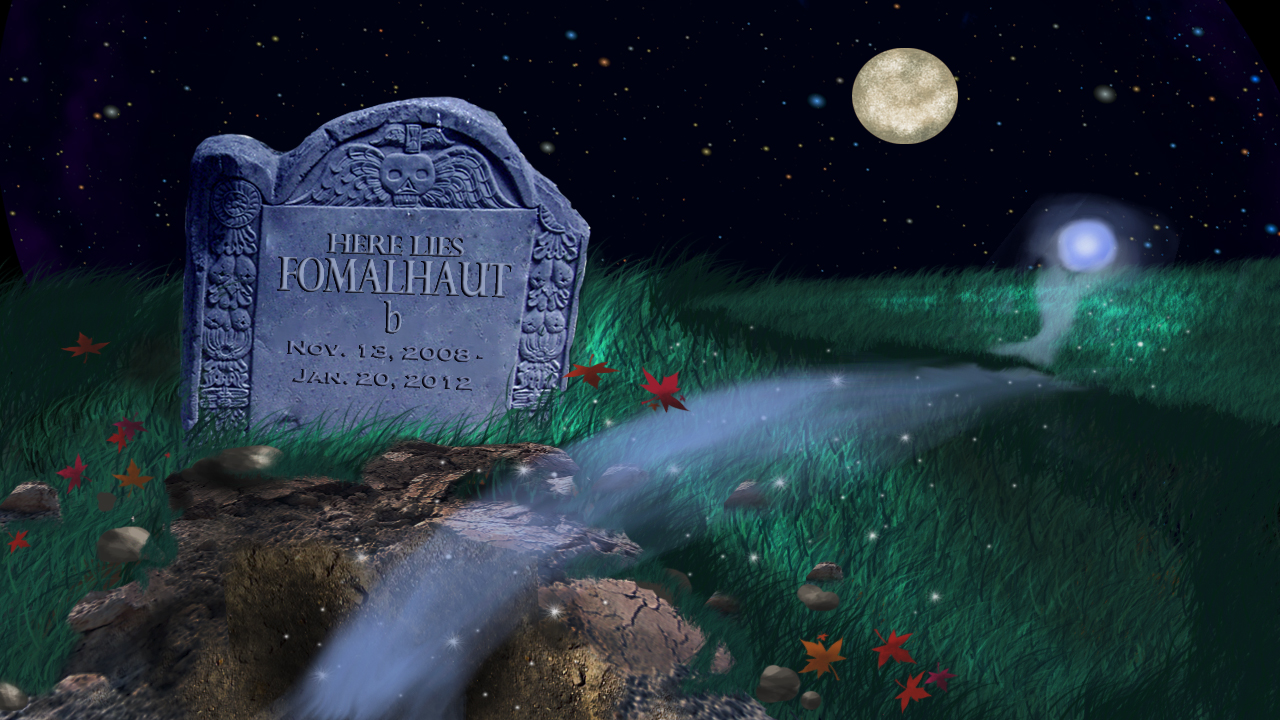Dust Simulations Paint Alien's View of the Solar System
Dust ground off icy bodies in the Kuiper Belt, the cold-storage zone that includes Pluto and millions of other objects, creates a faint infrared disk potentially visible to alien astronomers looking for planets around the sun. Neptune's gravitational imprint on the dust is always detectable in new simulations of how this dust moves through the solar system. By ramping up the collision rate, the simulations show how the distant view of the solar system might have changed over its history. More here.
Short video about the Kuiper Belt and the new supercomputer model of its evolution.
For complete transcript, click here.
Super computer simulation of Kuiper belt with dates.
Credit: NASA/GSFC/Marc Kuchner and Christopher Stark
Super computer simulation of Kuiper belt without dates.
Credit: NASA/GSFC/Marc Kuchner and Christopher Stark

These images, produced by computer models that track the movement of icy grains, represent infrared snapshots of Kuiper Belt dust as seen by a distant observer. For the first time, the models include the effects of collisions among grains. By ramping up the collision rate, the simulations show how the distant view of the solar system might have changed over its history.
Credit: NASA/GSFC/Marc Kuchner and Christopher Stark

These images, produced by computer models that track the movement of icy grains, represent infrared snapshots of Kuiper Belt dust as seen by a distant observer. For the first time, the models include the effects of collisions among grains. By ramping up the collision rate, the simulations show how the distant view of the solar system might have changed over its history. No Labels.
Credit: NASA/GSFC/Marc Kuchner and Christopher Stark

Simulated images of the ancient Kuiper Belt bear a striking resemblance to this Hubble Space Telescope view of the dusty ring around Fomalhaut, a young star located 25 light-years away in the constellation Piscis Austrinus. In 2008, Hubble spotted a planet orbiting inside the ring. The bright central star is masked out so that the faint ring can be seen.
Credit: NASA/ESA/P. Kalas, J. Graham, E. Chiang, E. Kite (Univ. of California, Berkeley), M. Clampin (Goddard Space Flight Center), M. Fitzgerald (Lawrence Livermore National Laboratory), and K. Stapelfeldt and J. Krist (Jet Propulsion Laboratory)
For More Information
Credits
Please give credit for this item to:
NASA/Goddard Space Flight Center. However, each image should be credited as indicated above.
-
Animators
- Chris Smith (HTSI)
- Scott Wiessinger (UMBC)
-
Interviewee
- Christopher Stark (University of Maryland College Park)
-
Narrator
- Chris Smith (HTSI)
-
Producer
- Scott Wiessinger (UMBC)
-
Scientists
- Christopher Stark (University of Maryland College Park)
- Marc Kuchner (NASA/GSFC)
-
Science writer
- Francis Reddy (University of Maryland College Park)
-
Graphics
- Francis Reddy (University of Maryland College Park)
Release date
This page was originally published on Thursday, September 23, 2010.
This page was last updated on Wednesday, May 3, 2023 at 1:54 PM EDT.
Series
This page can be found in the following series:Tapes
The media on this page originally appeared on the following tapes:-
Dust Ring
(ID: 2010101)
Tuesday, September 7, 2010 at 4:00AM
Produced by - Robert Crippen (NASA)



